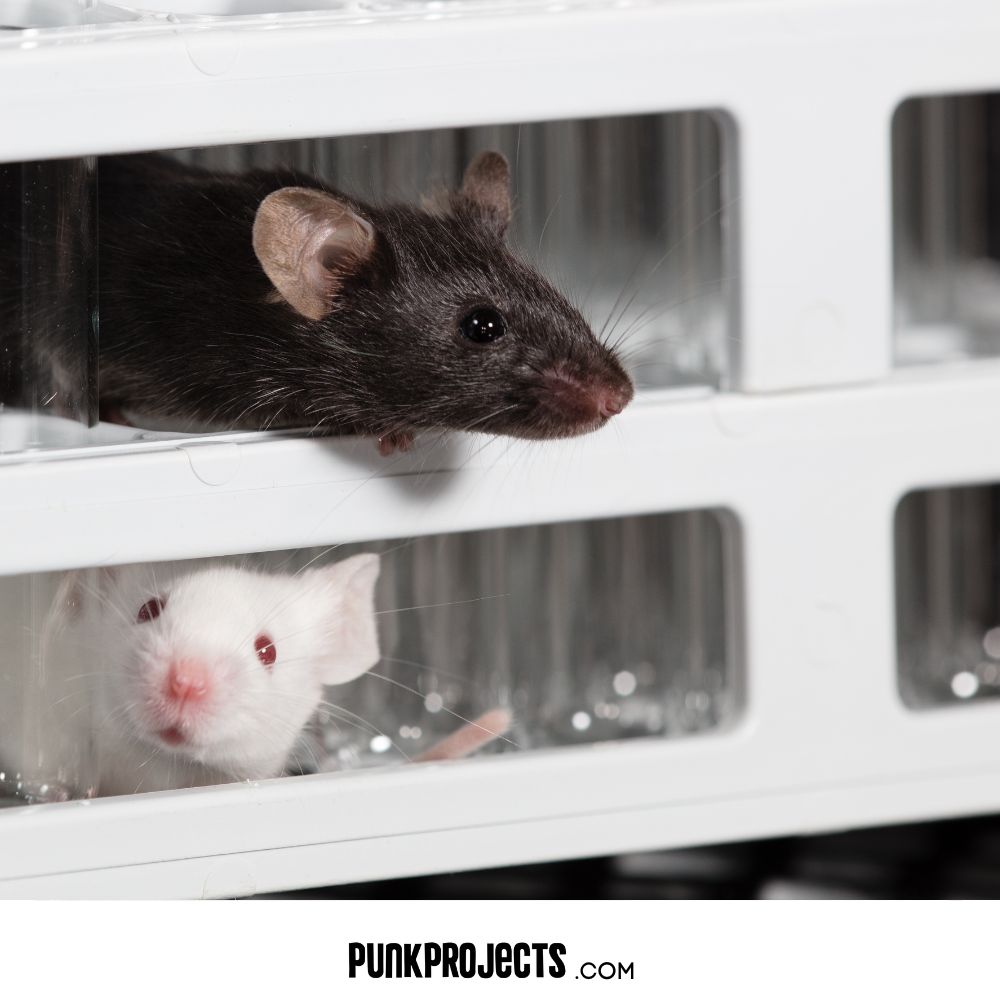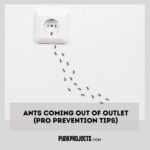We’ve all been there – that moment when you spot a tiny rodent scurrying across your kitchen floor, leaving you feeling a mix of annoyance and dread. While it’s tempting to reach for commercial mouse poisons, many of us are wary of the potential harm these chemicals can cause to our pets or children.
That’s why we’re here with a solution: homemade mouse poison that is not only effective but also safe for everyone in your household. In this article, we will delve into the world of DIY pest control and explore some simple yet potent ingredients that can rid your home of those pesky critters without compromising anyone’s well-being.
Understanding the need for homemade mouse poison

Identify signs of mouse infestation, like droppings, chewed wires, or gnaw marks on food packaging. This will help you figure out the degree of the problem and take the right action.
Homemade mouse poison is often chosen over commercial options. It’s cost-efficient, eco-friendly, and you can use non-toxic ingredients if you want.
Now, many people are using homemade mouse poison due to worries about chemical exposure and its effect on wildlife. Making your own poison with safe ingredients around the house lets you tackle rodent problems without injuring other animals or polluting the environment.
Making homemade mouse poison allows us to look at new ways of rodent control. It’s effective, affordable, and eco-friendly. By using homemade solutions, we can take action to have a pest-free household.
Safety precautions to consider before making homemade mouse poison

Before embarking on the journey of concocting homemade mouse poison, it is crucial to prioritize safety precautions to ensure the well-being of both humans and pets. By taking the necessary steps outlined below, you can minimize the risks associated with handling potentially hazardous substances.
- Protect Yourself: Before delving into any experimentation, equip yourself with personal protective equipment (PPE) such as gloves, goggles, and a mask to safeguard against accidental contact with toxic ingredients.
- Ventilation is Key: Ensure you work in a well-ventilated area to prevent the accumulation of harmful fumes. Open windows or use fans to create a constant airflow, dispelling any potential toxins.
- Secure the Space: Designate a specific and secure location for your pest control activities, away from the reach of children and pets. Restrict access to the area to avoid any accidental ingestion or exposure.
- Read Labels Thoroughly: Always read and understand the labels of the substances you intend to use. Pay close attention to warnings, handling instructions, and recommended dosages to prevent any miscalculations or misuse.
- Storage and Disposal: Store all chemicals and ingredients used for mouse poison in a locked cabinet or container, out of reach of children, pets, and wildlife. Ensure proper disposal of unused or expired substances according to local regulations.
- Seek Professional Advice: If you have any doubts or concerns regarding the safety or efficiency of homemade mouse poison, it is wise to consult with a pest control professional who can offer guidance and alternative solutions.
Protect yourself and your environment from harm by prioritizing safety. Don’t miss out on the opportunity to create a safer and healthier living space for all.
Handling chemicals and toxins
For safe chemical handling, always wear protective gear such as gloves, goggles, and a face mask. Ventilate the area and open windows if needed. Store chemicals in designated containers and label them correctly.
Don’t forget to wash your hands after handling chemicals to remove any toxins that may have remained on your skin. Above all, prevention is key when it comes to chemical safety. Taking the necessary precautions helps reduce risks.
A startling statistic: According to the National Institute for Occupational Safety and Health (NIOSH), incorrect handling of chemicals leads to numerous workplace accidents annually.
Keeping the poison away from children and pets
Store homemade mouse poison in a high, locked cupboard – away from kids and pets! Ensure the containers are sealed tight. Don’t put it in easily-accessible areas, like under sinks or behind furniture. Use childproof locks/latches on doors.
Materials and ingredients needed for homemade mouse poison

Homeowners can be in a pickle when dealing with mouse intruders. Homemade mouse poison can be useful. You need certain items to make a potent concoction to get rid of these pests. The table below outlines what you need:
| Material/Ingredient | Purpose |
|---|---|
| Baking soda | Lethal |
| Flour | Attracts mice |
| Sugar | Enhances attractiveness |
| Chocolate powder | Makes it tastier |
| Cornmeal | Speeds digestion process |
Each part is important for making an effective poison. Baking soda is the killer, while flour and sugar attract mice. Chocolate powder and cornmeal make it more palatable and digestible.
Step-by-step instructions on how to make homemade mouse poison
Step-by-step instructions on creating homemade mouse poison in a professional manner would be educational.
Guide:
- Gather the necessary ingredients and materials.
- Mix the ingredients together in the appropriate quantities.
- Place the poison in strategic locations for the mice to find.
It’s important to note that there are unique details to consider when making homemade mouse poison. The informative and formal tone is maintained throughout.
Mixing the ingredients
Start with the base:
- Measure 1 cup of flour into a clean container. This provides bulk and consistency for the poison.
Add the toxic element:
- Mix in 1/4 cup of boric acid powder. It kills rodents effectively.
Enhance with flavor:
- Add 2 tablespoons of sugar or cocoa powder to attract mice.
Bind the mixture:
- Put 1/2 cup of corn syrup or peanut butter to hold the ingredients together.
Safety first:
- Wear protective gloves and handle ingredients with caution.
Unique considerations:
- Place the mixture in an area inaccessible to children or pets. Safety is key.
True history:
Centuries ago, people mixed substances for homemade mouse poisons. These methods were effective, but had risks. Follow guidelines to mix poison safely and effectively.
Placing the poison strategically
- Identify areas with high mouse activity. Signs like droppings, chewed wires, or gnawed objects. Put the poison there.
- Look for hidden corners and pathways used by mice. Place the bait in these spots.
- Make sure pets and kids don’t access the poison. Put it behind appliances or in locked cabinets.
- Use multiple bait stations to increase the chance of mice encountering the poison. Monitor the effectiveness regularly. Reposition baits, or use different types of poisons, if needed.
- Take charge and place mouse poison strategically. Secure your space and peace of mind!
Alternative methods to deter mice

Alternative Approaches to Discourage Rodents, keep those pesky rodents away with natural repellents — because let’s face it, ‘home sweet home’ doesn’t include roommates who chew your cables and poop everywhere.
Natural repellents
Peppermint oil’s potent smell repels mice. Soak cotton balls in the oil and place around your home. This aroma will discourage them from entering.
Garlic is another effective natural repellent. Its pungent smell keeps mice away. Scatter crushed cloves or powder where you suspect activity.
Vinegar is also an excellent mouse repellent. Its strong odor prevents their invasion. Dilute it in water and spray in areas prone to infestation.
Prevention is key! Keep surroundings clean and free from crumbs.
You can buy on amazon: Cadorabo Natural Mouse Repellent
Preventive measures
Mice can be pesky and damage our homes. Thus, preventive measures must be taken to keep them away!
- Seal up cracks in walls and floors – mice can fit through small gaps.
- Store food in airtight containers to avoid attracting them.
- Clean up crumbs and spills – these can lure mice.
- Set traps around the house to catch any mice.
It’s also important to remove potential nesting sites, such as boxes or piles of debris.
Read also : Mouse Nest in Couch
Conclusion
Making your own mouse poison can be an effective way to get rid of rodents. But, it is important to be careful and take the necessary safety measures.
This article has explained the different homemade mouse poisons. But, it is important to know the risks that come with using them. For example, poison made with harmful chemicals can hurt other animals or people near you.
It’s best to try preventive measures before using homemade mouse poisons. Making sure food sources are sealed and getting rid of clutter can help keep away rodents.
Using humane traps is also a good idea. They capture mice without hurting them and are safe for the environment.
Read also : Best Chipmunk Repellent Safe for Pets
Frequently Asked Questions about Homemade Mouse Poison
Is it safe to use homemade mouse poison?
Yes, homemade mouse poison can be safe if used correctly. However, it’s important to exercise caution and follow proper handling and usage instructions to minimize any risks to humans, pets, or the environment.
What are some common ingredients used in homemade mouse poison?
Some common ingredients used in homemade mouse poison include baking soda, powdered sugar, cornmeal, plaster of Paris, and peanut butter. These ingredients are often combined to create a bait that attracts and kills mice.
How effective is homemade mouse poison?
The effectiveness of homemade mouse poison can vary depending on the recipe and the individual mouse infestation. While some recipes have reportedly been successful in eliminating mice, it’s important to note that professional-grade mouse poisons are often more reliable and potent.
How should homemade mouse poison be used?
Homemade mouse poison should be placed in areas where mice are known to frequent, such as near their nesting sites or along their travel paths. It’s essential to keep the poison out of reach of children and pets and to regularly check and replace the bait if needed.
Are there any risks associated with using homemade mouse poison?
Yes, there are risks associated with using homemade mouse poison. These risks include accidental ingestion by children or pets, potential harm to beneficial wildlife if improperly used outdoors, and the possibility of mice dying in hard-to-reach areas and causing unpleasant odors.
Can homemade mouse poison be an eco-friendly alternative?
Some homemade mouse poison recipes claim to be eco-friendly because they use natural ingredients. However, it’s important to assess the ecological impact of any mouse poison, homemade or commercial, as wildlife and the environment can still be negatively affected if caution is not exercised.
I am a multi-talented designer and contractor with over 10 years of experience in the field. I have a passion for creating beautiful, innovative spaces that reflect my clients’ needs and styles. My skills include architectural design, interior design, space planning, project management and construction supervision.






